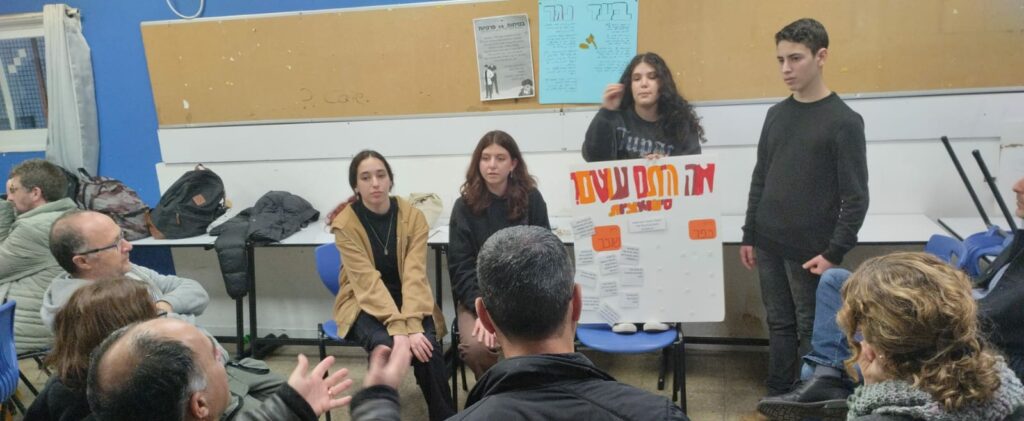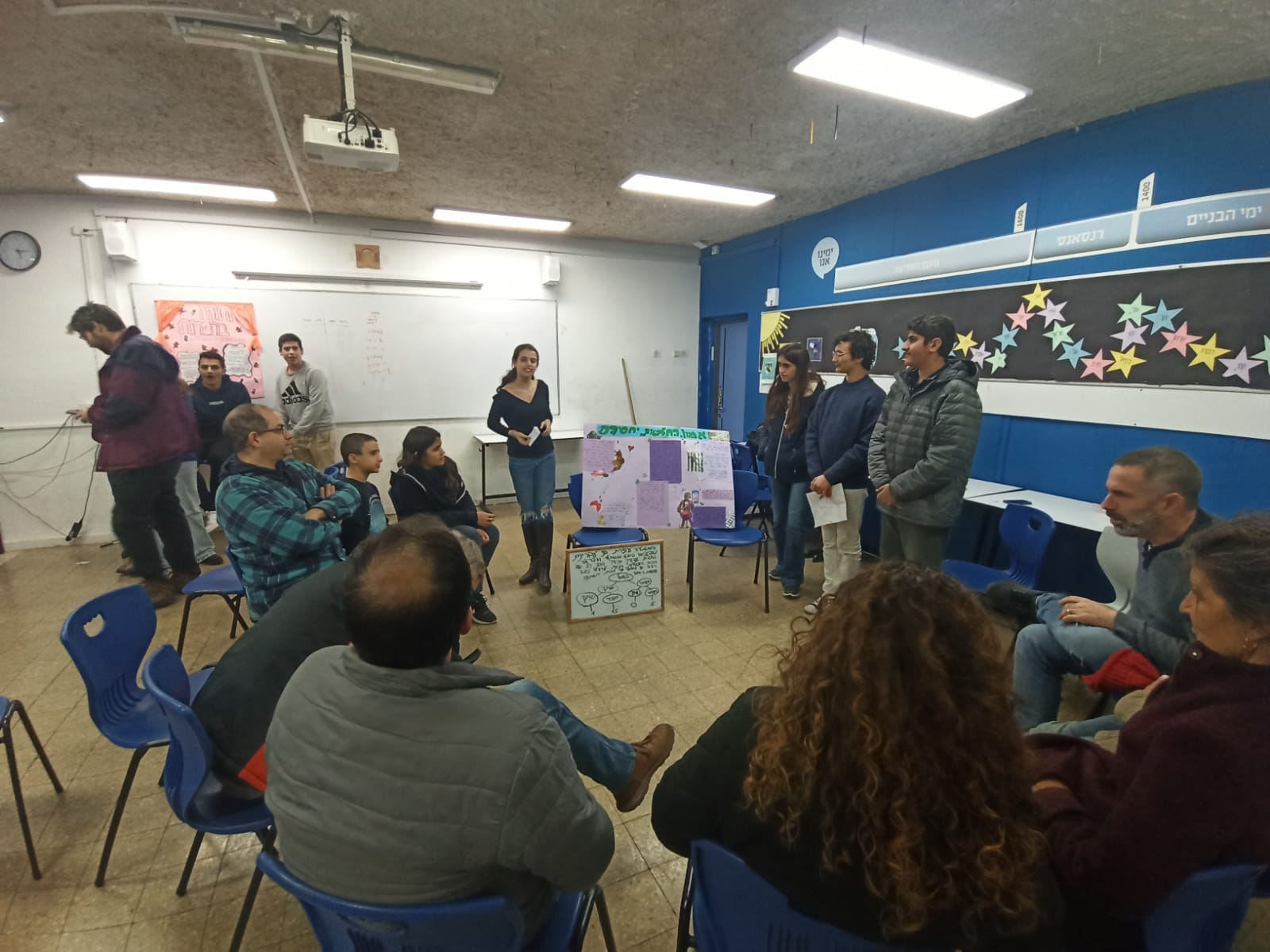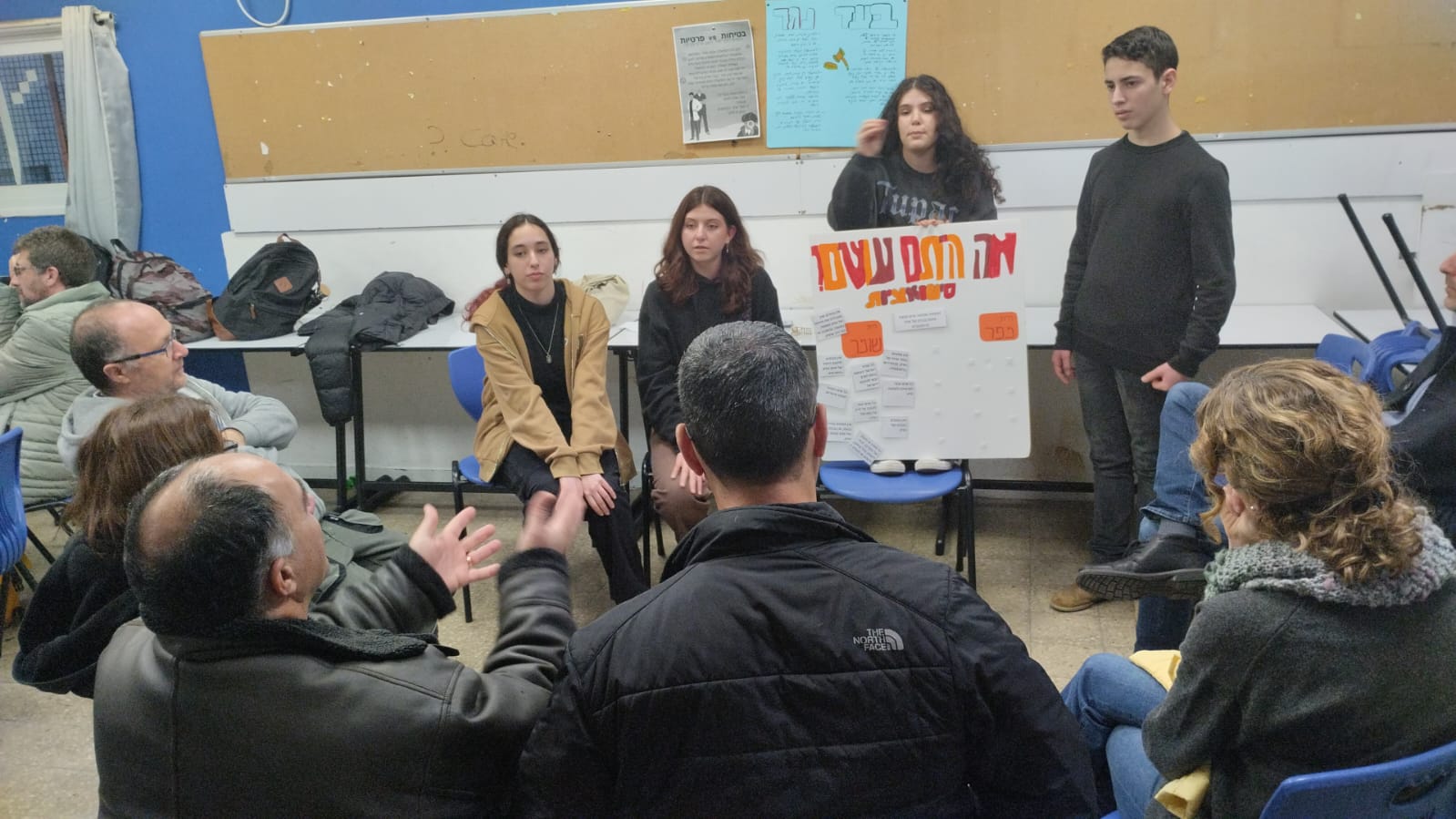
Empowering Decision-Making at IASA: A Journey with the Make it Open Project
Nestled in the heart of Jerusalem lies the Israel Arts and Science Academy (IASA), a remarkable middle school dedicated to nurturing the minds of tomorrow’s leaders. Armed with a cutting-edge computer lab and an array of technological tools, IASA stands at the forefront of innovative education. However, it’s not just the hardware; it’s the school’s unwavering commitment to excellence that sets it apart. In a blend of formal education and a sprinkle of playfulness, IASA joins hands with Make it Open, embarking on a journey that harnesses the power of decision-making.
The theme for this transformative project was not simply handed down from above, nor was it the sole brainchild of educators. At IASA, decisions are made collaboratively, with students and teachers joining forces to determine the path forward. The topic that emerged from this synergy was the art of decision-making itself—a skill that transcends the confines of the classroom and influences every facet of life.
With their theme in place, IASA’s dedicated teachers cast their net far and wide, inviting experts from diverse fields—psychology, neuroscience, biology, computer science, and mathematics—to share their wisdom. To dive even deeper into the world of decision-making, a visit to a computer science exhibition at the Science Museum was organised, allowing students to witness firsthand how computers make choices.
The students embarked on their journey of understanding decision-making through captivating presentations that wove real-life examples and simulations into the fabric of learning. Sharing their own decision-making experiences and dissecting the factors influencing their choices, students quickly became engrossed in the topic.
Further immersion followed, with students conducting interviews of their parents and other adults, delving into significant decisions made throughout their lives. Simulation games offered an experiential understanding of decision dynamics, while interactions with decision-making experts provided invaluable insights. Students even explored decision-making in the natural world through self-directed learning.

Photograph: students interviewing their parents.
Putting their newfound knowledge to the test, students were tasked with crafting physical models, each representing a unique decision. Collaborating in groups, and under the guidance of their arts teacher, they harnessed various materials and technologies, including 3D printers, to bring their models to life. Throughout this process, the principles of Make Pedagogy infused the project, promoting collaboration, experimentation, and iterative design.
As the Learning Scenario drew to a close, students proudly presented their creations during round-table discussions, engaging fellow students, parents, and experts from both their own school and a neighboring elementary school. Here, they shared their research findings, the strategies employed to persuade others towards wise decisions, and the meticulous decision-making processes they followed during model creation. An impressive Zine wall served as a canvas for students to reflect upon their learning journey.
‘We were excited to see our children engaged and motivated in their learning. It was impressive to see what they created and learned through this project.’
Student’s parent
The journey was challenging but immensely rewarding for both students and teachers. Collaborations with experts and schools from diverse European backgrounds added an international flair to the project, enriching the learning experience. Students exhibited significant growth in their decision-making abilities and their capacity to work both independently and collaboratively.
School leaders stood in awe of the quality of work produced by their students, as well as their unwavering enthusiasm. The project’s success stood as a testament to IASA’s commitment to pioneering and inclusive education.
For the students, this journey was a revelation. They relished the opportunity to delve into decision-making intricacies and collaborate with experts and peers from different schools. The hands-on approach, along with cutting-edge technology, empowered them to create tangible models that left a lasting impact on their fellow students.

Photograph: ‘open’ discussion between the students and their parents.
Experts and external partners were thoroughly impressed by the level of engagement and creativity displayed by the students. They hailed this project as a shining example of how innovative and inclusive education can equip students with the knowledge and confidence to make informed decisions that will shape their personal and academic futures.
In the hallowed halls of IASA, the Make it Open Project breathed life into the art of decision-making, reminding us that education can be both formal and playful, and that knowledge is a journey best enjoyed together.
‘The middle school did an excellent job implementing the learning scenario on decision-making. It was clear that the students had a deep understanding of the topic and had developed important 21st century skills through the project.’
Omer Gaist, Bloomfield Science Museum Jerusalem and Israeli hub leader
Pictures credit: IASA.